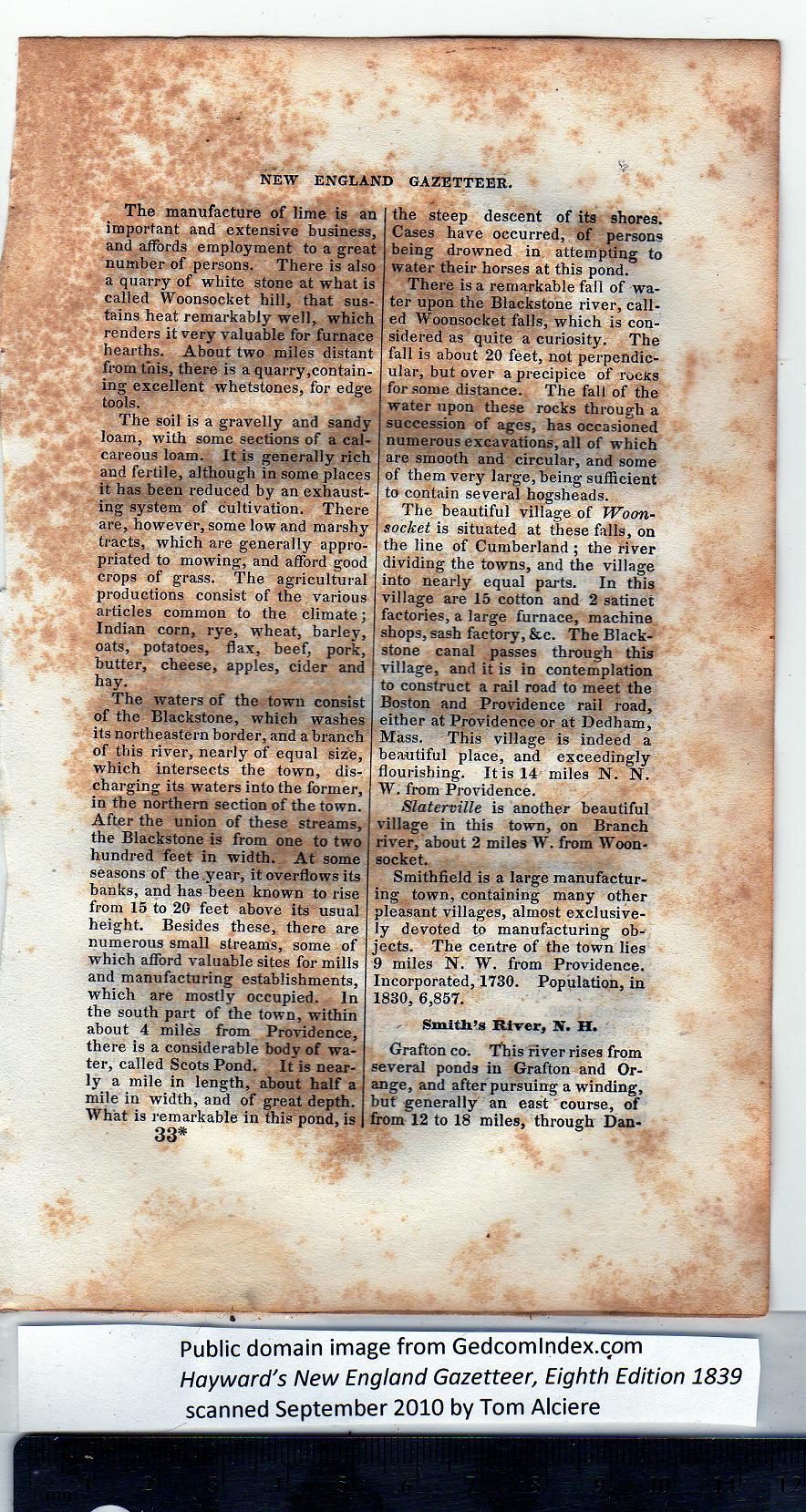|
The manufacture of lime is an
important and extensive business,
and affords employment to a great
number of persons. There is also
a quarry of white stone at what is
called Woonsocket hill, that sus-
tains heat remarkably well, which
renders it very valuable for furnace
hearths. About two miles distant
from this, there is a quarry,contain-
ing excellent whetstones, for edge
tools.
The soil is a gravelly and sandy
loam, with some sections of a cal-
careous loam. It is generally rich
and fertile, although in some places
it has been reduced by an exhaust-
ing system of cultivation. There
are, however, some low and marshy
tracts, which are generally appro-
priated to mowing, and afford good
crops of grass. The agricultural
productions consist of the various
articles common to the climate;
Indian corn, rye, wheat, barley,
oats, potatoes, flax, beef, pork,
butter, cheese, apples, cider and
hay.
The waters of the town consist
of the Blackstone, which washes
its northeastern border, and a branch
of this river, nearly of equal size,
which intersects the town, dis-
charging its waters into the former,
in the northern section of the town.
After the union of these streams,
the Blackstone is from one to two
hundred feet in width. At some
seasons of the year, it overflows its
banks, and has been known to rise
from 15 to 20 feet above its usual
height. Besides these, there are
numerous small streams, some of
which afford valuable sites for mills
and manufacturing establishments,
which are mostly occupied. In
the south part of the town, within
about 4 miles from Providence,
there is a considerable body of wa-
ter, called Scots Pond. It is near-
ly a mile in length, about half a
mile in width, and of great depth.
What is remarkable in this pond, is |
the steep descent of its shores.
Cases have occurred, of persons
being drowned in attempting to
water their horses at this pond.
There is a remarkable fall of wa-
ter upon the Blackstone river, call-
ed Woonsocket falls, which is con-
sidered as quite a curiosity. The
fall is about 20 feet, not perpendic-
ular, but over a precipice of rotxs
for some distance. The fall of the
water upon these rocks through a
succession of ages, has occasioned
numerous excavations, all of which
are smooth and circular, and some
of them very large, being sufficient
to contain several hogsheads.
The beautiful village of Woon-
socket is situated at these falls, on
the line of Cumberland ; the river
dividing the towns, and the village
into nearly equal parts. In this
village are 15 cotton and 2 satinet
factories, a large furnace, machine
shops, sash factory, &c. The Black-
stone canal passes through this
village, and it is in contemplation
to construct a rail road to meet the
Boston and Providence rail road,
either at Providence or at Dedham,
Mass. This village is indeed a
beautiful place, and exceedingly
flourishing. It is 14 miles N. N.
W. from Providence.
Slaterville is another beautiful
village in this town, on Branch
river, about 2 miles W. from Woon-
socket.
Smithfield is a large manufactur-
ing town, containing many other
pleasant villages, almost exclusive-
ly devoted to manufacturing ob-
jects. The centre of the town lies
9 miles N. W. from Providence.
Incorporated, 1730. Population, in
1830, 6,857.
Smith’s River, N. H.
Grafton co. This river rises from
several ponds in Grafton and Or-
ange, and after pursuing a winding,
but generally an east course, of
from 12 to 18 miles, through Dan- |
